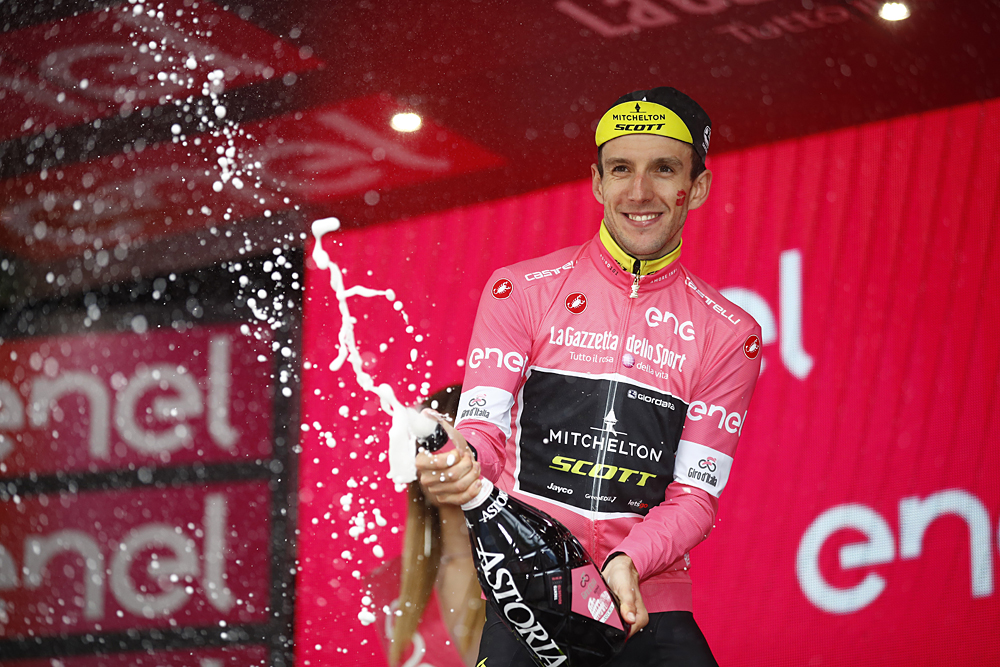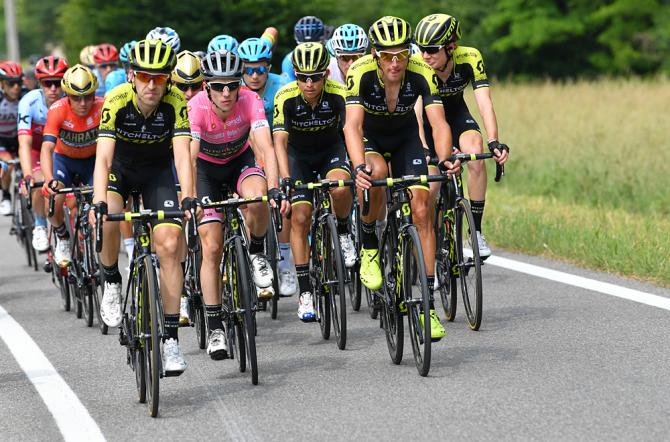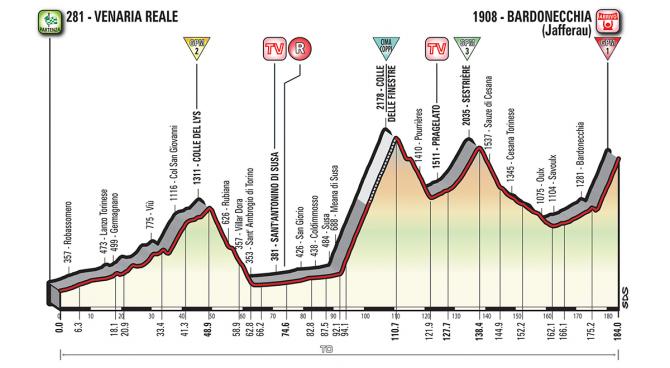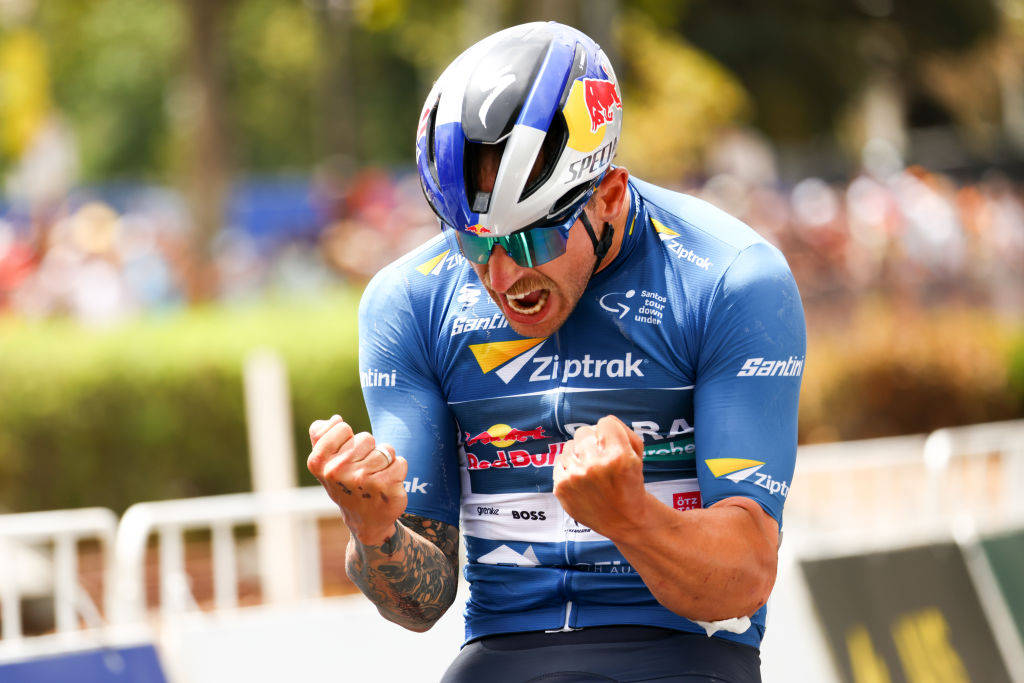Giro d'Italia stage 19: The hardest part is still to come
Dumoulin chases Yates, while Froome is the wildcard on the Finestre

As the Giro d'Italia gruppo pedalled towards Prato Nevoso on Thursday afternoon, the eye will have been drawn by the snow-capped peaks that loomed imposingly on the horizon beyond the day's finishing climb. They seemed to serve as a tacit reminder: no matter what happens here, the hardest part is still to come.
Giro d'Italia stage 18: Simon Yates' lead halved atop Prato Nevoso
Giro d'Italia: Stage 18 highlights - Video
Giro d'Italia: Yates tries to paper over the cracks after losing time to Dumoulin
Chris Froome: The race is still on
Pozzovivo's confidence grows as Giro d'Italia's big mountain stages loom large
In the end, the ascent of Prato Nevoso on stage 18 tightened the margins of this Giro in a way that few could have anticipated. It was expected to be the most straightforward of the race's three days in the Alps, but a breathless finale saw Tom Dumoulin (Team Sunweb) halve Simon Yates' lead to just 28 seconds.
Come Friday's immense tappone from Venaria Reale to Bardonecchia, however, the arithmetic of this Giro may well be performed in minutes rather than seconds. Stage 19 is, quite simply, the hardest stage of the race to this point. If, as per the truism, anything can happen in the final week of the Giro, then Friday is the day where those things are most likely to take place.
The dirt road of the Colle delle Finestre is the headline attraction on the stage – not to mention the highest point of the entire Giro – but it would be reductive to focus solely on that evocative ascent. The beauty and the brutality of stage 19 are that there is scarcely any let up at all, with the Colle del Lys, Sestriere and a summit finish on the Jafferau also crammed into the day's 184 kilometres.
The route
The stage sets out from Venaria Reale, north of Turin and former residence of the House of Savoy, and the road rises gradually for the first hour or so even before the gruppo hits the day's first classified climb, the category 2 Colle del Lys (13.8km at an average of 4.3 per cent and a maximum of 12 per cent).
The valley that follows might offer some respite, but with the gaps so narrow atop the overall standings, it may well be that Yates and Dumoulin find themselves vying for bonus seconds at the first intermediate sprint in Sant'Antonio di Susa after 74.6km.
Next up is the majestic Colle delle Finestre, which features on the Giro route for the fourth time since its dramatic introduction in 2005. On that occasion, José Rujano led over the summit en route to a stage victory at Sestriere, though the day was more notable for the daredevil descent – and on-the-hoof alliances – that helped Paolo Savoldelli save his pink jersey on the penultimate day of the race. In 2011, Vasil Kiryienka led over the top en route to a stage victory in Sestriere.
The latest race content, interviews, features, reviews and expert buying guides, direct to your inbox!
On the Giro's last visit in 2015, Mikel Landa's monstrous acceleration as the road turned from asphalt to dirt put Alberto Contador into severe difficulty and loosened the Spaniard's hitherto secure grasp on overall victory. Contador, however, recovered sufficiently to secure his pink jersey, while Landa reached Sestriere in tears, having been ordered to cease his attack and drop back to help his Astana leader Fabio Aru. On this occasion, the Finestre is positioned earlier in the stage, with its summit some 73 kilometres from the finish, but that will do little to diminish its significance.
At 18.5km in length, with an average gradient of 9.2 per cent and a maximum of 14 per cent, the Finestre is already a brute on the page and even more difficult on the road – thanks, in no small part, to the eight kilometres of dirt road between Il Colletto and the summit, some 2,178 metres above sea level. The gradient in those last 8km oscillates between 9 and 10 per cent, with scarcely a moment in which to recover.
After a short, sharp descent off of the Giro's Cima Coppi, the road climbs again on the road Sestriere, which is rather underserved by its classification as a category 3 ascent. The average gradient may be a mere 3.8 per cent, but the road climbs for more than 16 kilometres with pitches of 9 per cent.
The summit of Sestriere comes with a shade under 50 kilometres to go, and while the long drop off the climb and the valley road to Bardonecchia provide some opportunity to recover, a dropped rider without teammates or willing allies risks losing minutes even before the asphalt pitches up one final time towards the summit finish.
The category 1 haul up the Jafferau might be short (7.2km), but its slopes are wickedly steep, with an average of 9.1 per cent and a maximum gradient of 14 per cent. The toughest section comes 6km from the top, but the road scarcely relents thereafter. With more than 4,000 metres of total climbing on the agenda, this promises to be a slugging match: whoever has the strength to stand and the resolve to swing a fist might find themselves landing a decisive blow.
The lie of the land
Simon Yates' unexpected concession of 28 seconds in the final two kilometres has rather altered the tenor of the battle for the maglia rosa, though the Mitchelton-Scott rider was bullish on Thursday evening, maintaining that the heavy-duty climbing of stage 19 suited him better than the explosive effort up Prato Nevoso.
"I'm not worried. I'm still in front from what I understand. It's better than being behind," Yates said. "Tomorrow much better for me than today, where it was just one massive effort. Tomorrow there are more continuous climbs. The more climbs for me, the better."
Dumoulin, now second at 28 seconds, will hope that Yates' travails on Thursday are a sign that his sparkling Giro is falling flat. The sheer severity of stage 19 will inevitably provide confirmation one way or another. As on Thursday, Dumoulin may well find allies of circumstance in Domenico Pozzovivo (third at 2:43) and Chris Froome (fourth at 3:22).
On Thursday evening, Mitchelton-Scott directeur sportif Matt White predicted that Froome would go on the attack from as far out as the Finestre, reckoning that the Sky rider was prepared to risk everything in search of the maglia rosa. Indeed, with his salbutamol case yet to be resolved, Froome might feel that he has nothing to lose at this juncture, given that his final result from this Giro may ultimately be scrubbed from the record books.
"We've got the Colle delle Finestre, on dirt roads. There's room to invent something," Froome said. Pozzovivo echoed that enthusiasm: "I'm looking forward to the big mountain stages, but I'm not sure if everyone else is."
Mitchelton-Scott's Jack Haig sat up to save his legs on the upper slopes of Prato Nevoso, and he grinned when asked if he anticipated a volley of attacks from Yates' rivals on Friday and Saturday.
"That would be their natural reaction: they want to win the bike race, and we want to defend the lead. We're a little bit scared of them, but we have the legs," Haig said. "When you get to the end, and you realise you can win one of the biggest races in the world, it's always a little bit nerve-wracking, but it's exciting too."

Barry Ryan was Head of Features at Cyclingnews. He has covered professional cycling since 2010, reporting from the Tour de France, Giro d’Italia and events from Argentina to Japan. His writing has appeared in The Independent, Procycling and Cycling Plus. He is the author of The Ascent: Sean Kelly, Stephen Roche and the Rise of Irish Cycling’s Golden Generation, published by Gill Books.


